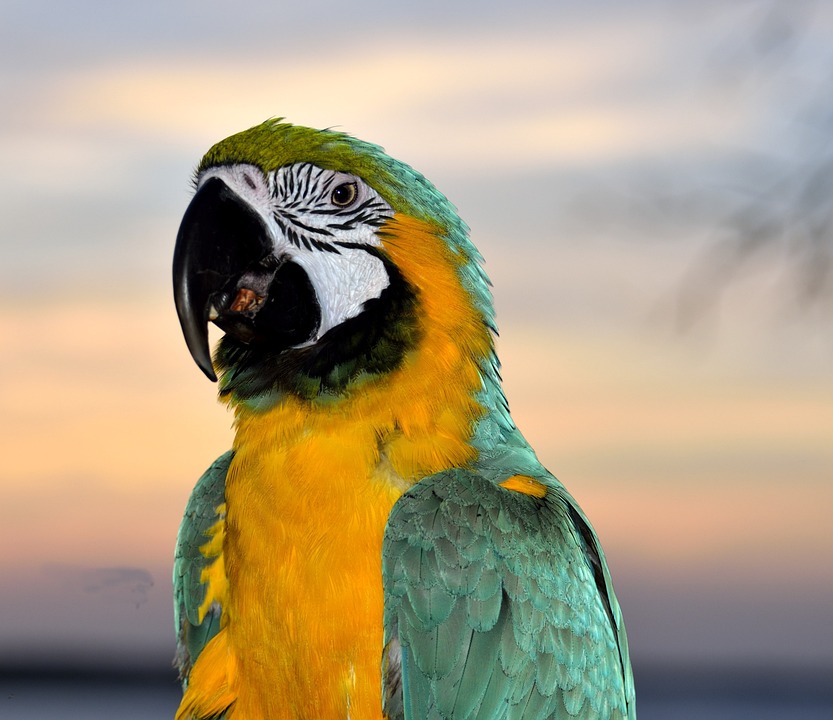Parrots are intelligent and social birds that require mental and physical stimulation to thrive. Understanding their behavior and recognizing signs of excitement or playfulness is crucial for their overall well-being. In this article, we will explore how to identify these signs and engage in interactive games with your parrot to keep them entertained.
When it comes to recognizing signs of excitement or playfulness in your parrot, there are several indicators to look out for. Parrots often express their excitement through vocalizations, body language, and specific behaviors. Pay attention to their vocalizations, as they may make cheerful chirping sounds, squawk, or mimic noises they have learned. The tone and pitch of their vocalizations can vary depending on their level of excitement.
Observing your parrot’s body language is also essential in gauging their level of excitement. Look for signs such as fluffed feathers, rapid tail wagging, head bobbing, and wing flapping. Fluffed feathers indicate that your parrot is trying to appear larger and more animated. Rapid tail wagging is a clear sign of excitement or playfulness, while head bobbing is often done when they are excited or anticipating something. Wing flapping, especially in a stationary position, indicates a playful mood.
In addition to vocalizations and body language, parrots engage in various physical activities when they are excited or playful. These activities can include climbing, swinging, hanging upside down, running around their cage or play area, and playful beak-biting gestures towards toys or objects.
Once you can recognize signs of excitement or playfulness in your parrot, it’s time to engage them in interactive games. Interactive playtime provides mental stimulation and strengthens the bond between you and your feathered friend. Here are a few game ideas to keep your parrot entertained:
1. Hide and Seek: Hide small treats or toys around your parrot’s cage or play area and encourage them to search for these hidden treasures. This game not only keeps them mentally stimulated but also taps into their natural foraging instincts.
2. Puzzle Toys: Invest in puzzle toys specifically designed for parrots. These toys often require problem-solving skills to retrieve treats or rewards, providing an excellent opportunity for mental stimulation and interactive play.
3. Teaching Tricks: Parrots are highly intelligent and can learn a variety of tricks. Teach them simple tricks like waving, turning around, or retrieving objects. Use positive reinforcement techniques, such as treats or praise, to reward their efforts.
4. Social Play: Parrots are social creatures and often enjoy playing with their human companions. Engage in interactive games such as fetch with a bird-safe toy or gentle tug-of-war using a rope toy. These activities strengthen the bond between you and your parrot.
Always prioritize your parrot’s safety during playtime. Avoid small, easily ingestible toys, and supervise them closely during interactive games.
Now, let’s address some commonly asked questions about parrot behavior:
Q: My parrot seems to be excessively vocal and energetic lately. Is this a sign of excitement or something else?
A: Yes, excessive vocalization and increased energy levels can indicate excitement or playfulness in parrots. However, sudden changes in behavior should be monitored, as they could also be due to stress, illness, or other factors. Consult a veterinarian if you have concerns.
Q: How often should I engage in interactive games with my parrot?
A: Parrots thrive on mental stimulation and social interaction. Aim for at least 15-30 minutes of interactive playtime each day. However, individual parrot preferences may vary, so pay attention to their response and adjust accordingly.
Q: Can I use household items as toys for my parrot?
A: While some household items can be repurposed as parrot toys, it is crucial to ensure they are safe and bird-friendly. Avoid items with small or sharp parts, toxic materials, or anything that could potentially harm your parrot if ingested.
Q: My parrot seems disinterested in interactive games. What should I do?
A: Parrots, like humans, have unique personalities and preferences. Experiment with different types of games, toys, and treats to find what interests your parrot the most. Patience and persistence are key in discovering activities that captivate their attention.
By recognizing signs of excitement or playfulness in your parrot and engaging in interactive games, you can provide them with a stimulating and enjoyable environment. Remember to always prioritize their safety and well-being. Enjoy exploring the wonderful world of parrot behavior and play!









